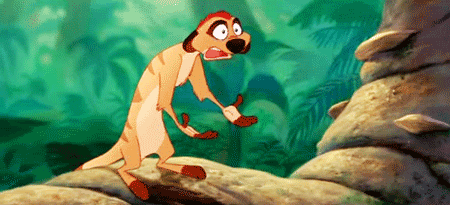The 10 Most Timeless Children’s Films
- Oops!Something went wrong.Please try again later.
The post The 10 Most Timeless Children’s Films appeared first on Consequence.
This list was originally published in 2019. It has been republished on April 7th, 2023, in celebration of The Sandlot’s 30th anniversary.
Timelessness is a simple enough concept — until you try to apply it.
Age must factor in, and indeed several of the children’s films featured here have popularly endured across several decades and multiple generations. (To account for longevity, we decided that a movie had to be at least 20 years old — approximately a generation — to be considered for this list. Sorry, Nemo.)
Does a film need to have become part of our pop-culture lexicon to be dubbed timeless? In other words, should the bulk of the people you encounter each day have seen or know something about the movies on this list? Only a couple handfuls of films across all genres meet that standard, and a few of the kids’ flicks that definitely do are here.
Now, this is where things get as hairy as an Oompa-Loompa nibbling hair toffee. Can a film be timeless for some but not for others? I suspect if I was born a few years later, I’d be more gung ho about a couple of our animated inclusions championed by my younger colleagues. By the same token, if they were my age, maybe they would’ve seconded my votes for a Don Bluth feature like An American Tail or The Land Before Time. So much depends on a few years’ difference, or what our parents happened to push into the VCR — maybe a movie they once cherished as a child or, just as likely, what they found in a VHS or DVD bargain bin. It seems my parents found a ton of Bluth bargains.
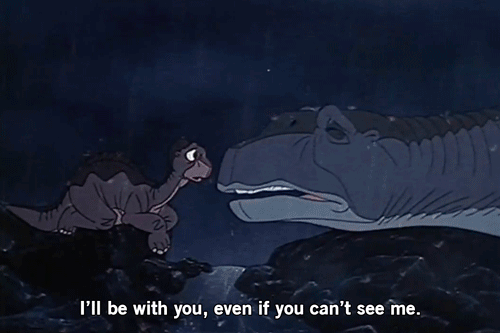
Maybe even more interesting than what is or isn’t on this list today will be what falls off a few years down the line and what films do the usurping. Is timelessness really forever? Will all these films endure as they have until now, or will the Nemos, Frozens, Inside Outs, and Paddingtons rightfully wiggle in as time passes and our children become adults and then parents with their own kids to entertain? Will constant bombardments lobbed by television programmers thrust other forgotten films back into the public consciousness as they once did Willy Wonka and, more recently, A Christmas Story?
While many of the films on this list have and will continue to inspire remakes, reboots, sequels, and offshoots, they are all series originals. Given trends like the current Disney live-action reboot craze, might remakes and sequels of some of these very films one day replace their progenitors on lists like these? Only time will tell.
So, where does that leave this possibly quite ephemeral list of the most timeless children’s films? Well, we could do far worse than begin with a famous comment from W.H. Auden: “There are no good books which are only for children.” This applies to film as well, I believe, and acts as the guiding force behind our choices. The following are films that children take with them into adulthood and return to when they need an escape from it. These are films that today’s iChild should still be able to unplug for and watch with an older sibling, a parent, or a grandparent, each experiencing some sense of wonder.
If a children’s film can tick that box in a powerful way, it’s worth hanging on to, timeless or no.
— Matt Melis
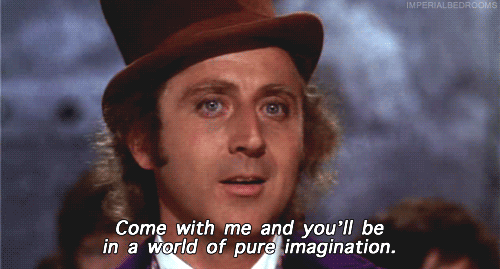
10. The NeverEnding Story (1984)
Not Quite Timeless (Runtime): 1 hr. 42 min.
Once Upon a Time: A bullied bookworm still grieving the loss of his mother borrows a magical book from a bookshop and soon finds that he’s not just really into the story — he’s really in the story. Support your local independent bookstores, people.
Fantasians (Cast): Barret Oliver, Thomas Hill, Deep Roy, Noah Hathaway, Alan Oppenheimer, and Tami Stronach
Moment of Pure Imagination: Just like with movies, if we’re reading a story and find ourselves getting too caught up in it, we can always put down the book and say, “It’s only a story.” The fact that Bastian can’t do that is partly what makes The NeverEnding Story so magical. As enthralling as Atreyu’s quest to cure the Childlike Empress may be, it’s just as magical to slowly discover that Bastian plays the most crucial role in this adventure. It’s a fantasy equal parts wondrous and unsettling. After watching this move as a child, it was a good number of weeks before I could pick up a book again without wondering if I’d find my name printed on its pages.
Somewhere Over the Reading Rainbow: Some authors churn out novels that already read like movie scripts. Others are much tougher to adapt and get very frustrated when they barely recognize their creations up on the silver screen. German author Michael Ende fits that latter category and actually sued when he saw what was being done to his novel. Ende’s major gripes came over plot deviations and the fact that the film only tells the first half of Bastian’s story. The second half of Ende’s novel would loosely inform the godawful, Jonathan Brandis-starring 1990 sequel, but that’s, as they say, another story.
You’re Scaring Me, Smalls!: This is a dark, dark film full of adventure and triumph but also misery and grief. As a child, so much of this movie comes across as absolutely terrifying. It’s a completely subjective pick-’em situation when it comes down to selecting the scariest moment. For me, I always struggled near the film’s end when the Empress calls out to Bastian as the Ivory Tower crumbles around her. It felt like she was calling me. And I”ll be damned if I was going to answer back.
Give It to Me Now! (Veruca Salt Moment): A wise luckdragon once said, “Having a luckdragon with you is the only way to go on a quest.” Sold. I don’t have many quests lined up these days, but I wouldn’t mind roaring through downtown Chicago and finding some bullies who need a dumpster visit.
Why It’s Timeless: The best children’s books and films speak up to children, not down to them. Really, at the heart of this film is a young boy grieving the loss of a mother without a supportive father or any friends to help ease his pain. “The Nothing,” rightly or wrongly, can be read as the grief and depression that threaten to consume young Bastian. Far from a critical darling when it originally ran in theaters, the decades since have been far kinder to The NeverEnding Story. It’s an adventure-quest equal parts wondrous, dark, and fun that blurs the lines between reality and imagination. If you want a “safe” movie, this story is not for you. Now, could you get ’round and scratch behind my right ear? Ah, that’s the spot.
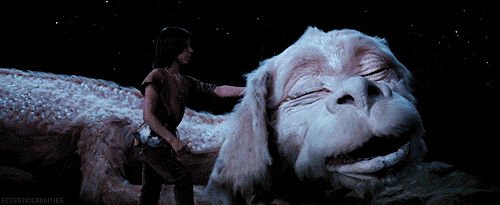
— M.M.
09. The Sandlot (1993)
Not Quite Timeless: 1 hr. 41 min.
Once Upon a Time: An L-7 weenie, his mother, and his stepdad move to a new town where he befriends the local star athlete who helps him out of a pickle involving a Babe Ruth-autographed baseball, a very tall fence, and a giant, man-eating mongrel. It’s a summer of foul balls, friends, fangs, and maybe even legends.
Starting Lineup: Tom Guiry, Mike Vitar, James Earl Jones, Karen Allen, Denis Leary, Patrick Renna, Chauncey Leopardi, and Art LaFleur
Moment of Pure Imagination: The moment of pure nostalgia comes on the 4th of July when the boys play their annual night game under the fireworks amid neighborhood cookouts and block parties. The explosions illuminate the sky, Ray Charles belts out “America the Beautiful,” and the boys, or at least Benny, live out their fantasies of being big leaguers under bright ballpark lights.
However, the scene that really sparks the imagination is when Benny pickles The Beast. We finally see Mr. Mertle’s killer guard dog, Hercules, and the secret chess match the boys have been waging for days spills over into the rest of town. While the locals just see a dog chasing a boy in a Dodgers hat, the sandlot gang are witnessing not a hero, but a legend being born. And remember the difference: “Heroes get remembered. Legends never die.” Follow your heart, Benny, man!
You’re Scaring Me, Smalls!: Sandlot isn’t a particularly scary movie, but between Squints’ tree house story (“FO-EV-ER”), all the terrible snarling and growling, and the overblown screams and facial expressions from the boys anytime they see The Beast, you do start to wonder just what type of monster Old Man Mertle might have chained up on the other side of that fence.
Give It to Me Now!: As a young athlete, I wanted Benny’s P.F. Flyers, guaranteed to make a kid run faster and jump higher. Maybe that tree house pre-vacuum explosion. Now, though, a consensual kiss from Wendy Peffercorn would be my top pick. All these years later, she still knows exactly what she’s doing. Just ask Squints. He married her and had nine kids! Actually, scratch that. I’d rather play catch in a backyard with Denis Leary and call him Dad, I mean, Bill. Can somebody make this happen?
Why It’s Timeless: Most of the stories on this list take place in a fantasy world. The Sandlot is probably the only film here that actually approximates what growing up was like for some of us. It was a time when life was simple enough: baseball, buddies, and, forgive me, babes, or, more accurately, girls as seen through the eyes of curious chickenshits. These few formative summers existed for so many of us, and as we see the sandlot gang slowly move away one by one, until it’s just Smalls and Hercules left, we can’t help but think of the Squintses, Hams, and Jets from our own childhoods. The ending of Sandlot tugs at us in the same way the closing lines of Stand by Me do:
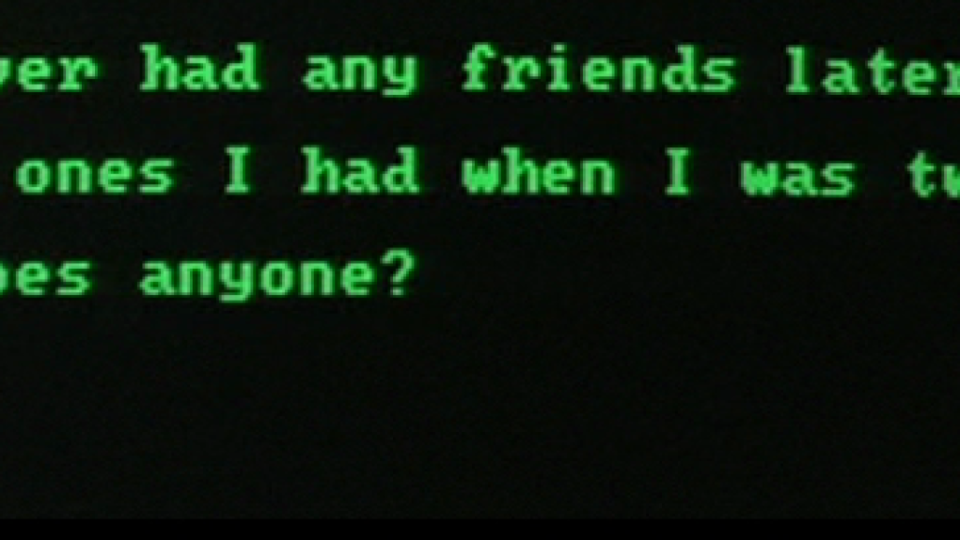
— M.M.
08. The Nightmare Before Christmas (1993)
Not Quite Timeless: 1 hr. 16 min.
Once Upon a Time: “‘Twas a long time ago, longer now than it seems in a place perhaps you’ve seen in your dreams. For the story you’re about to be told began with the holiday worlds of auld. Now you’ve probably wondered where holidays come from. If you haven’t, I’d say it’s time you begun. For holidays are the result of much fuss and hard work for the worlds that create them for us. Well, you see now, quite simply that’s all that they do — making one unique holiday, especially for you. But once, a calamity ever so great occurred, when two holidays met by mistake.”
Pumpkins, Monsters, and Santa: Chris Sarandon, Danny Elfman, Catherine O’Hara, William Hickey, Glenn Shadix, and Ken Page
Moment of Pure Imagination: What makes The Nightmare Before Christmas click in the eyes of so many youths is how the story involves the two greatest holidays: Halloween and Christmas. The cold, spooktacular open stirs up all the right feelings for anyone born under a pumpkin, but there’s little arguing over Jack Skellington’s initial discovery of Christmas Town. The candied lights, the powdery snow, and the wistful wonder on Skellington’s face are further embellished by Danny Elfman’s ridiculously catchy anthem, “What’s This?”. As our bony hero hops from one Christmas trope to another, it’s damn near impossible not to sing along with him as he screams, “This looks like fun, this looks like fun!” Truth be told, it is fun.
Somewhere Over the Reading Rainbow: There’s a reason the film reads Tim Burton’s The Nightmare Before Christmas, even though the veteran auteur didn’t direct the film or write the screenplay. Way back in 1982, a good 11 years before the film would scare and charm children all over the world, Burton penned the holiday mashup as a poem.
At the time, he was working as an animator at Walt Disney Feature Animation, and when the ol’ Mouse House caught a look, they realized they had a hit on their hands. Naturally, it took over a decade to come to fruition, and by then, they issued the film through their Touchstone banner. Reason being, the suits thought Skellington’s conquests “too dark, and scary for kids.” Still, the poem’s a choice bedtime story.
You’re Scaring Me, Smalls!: Honestly, as someone who grew up worshipping Halloween and horror films, I’ve never found Nightmare to be that scary. In hindsight, though, there is something pretty disturbing about Sally’s jerkstore “father” Doctor Finklestein.
Voiced by the great and late William Hickey, aka Uncle Lewis in National Lampoon’s Christmas Vacation, the brainy, freewheelin’ mad scientist has this weird stranglehold over his creation and the way he barks demands and keeps Sally locked up is all sorts of messed up. At one point, she has to jump out of the tower like some suicidal rag doll just to sneak away from his grasp. Sorry, Oogie, but when it comes to Psychoville, Finklestein’s the mayor.
Sing It Again, Jack: What typically tends to happen with most musicals is that the best song is usually paired with the most stirring moment. It’s the nature of the beast, so naturally “What’s This?” is arguably the strongest composition of the bunch. Who doesn’t immediately jump around whenever anymore mutters the titular phrase? What’s more, most people totally get it, too, which only proves how ubiquitous the song has become over the years.
Having said that, if there’s a runner-up, well, then let’s start celebrating All Hallow’s Eve early with “This Is Halloween,” the introductory jam that follows Elfman’s delicate opening notes and Santa’s foreboding prologue. Given the myriad voices and characters, the whole thing sounds like a children’s pop-up book, as everyone gets a piece of the pumpkin pie. FYI: The late Glenn Shadix is the true MVP on this one.
Give It to Me Now!: This one’s easy: Zero. Who wouldn’t want to walk around with a ghost pup? You wouldn’t have to feed it, it’s already dead, and there’s zero shedding. He even has a cute, lil’ jack-o’-lantern nose!
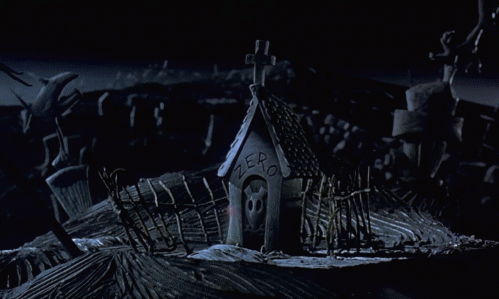
Why It’s Timeless: The Nightmare Before Christmas is eye candy, sure, but it’s brilliant, tasty, and sugary eye candy. As a child, it’s a compendium of everything you love: tricks, treats, gifts, and sweets. Youngsters will feverishly look forward to Halloween and Christmas forever and ever, and Burton’s twisted parable will be right there, haunting the two holidays with much delight, especially since the idea of an Alternative Christmas Movie has essentially evolved into the Classic Christmas Movie.
There’s also something to be said of its ambiguous time frame, and that’s partly why it continues to resonate with multiple generations. As for all the adults out there, it would take a real cynical son of a gun to scoff at Henry Selick’s slick stop-motion direction or Elfman’s rousing earworms. How anyone could watch “Jack’s Lament” and not shake their heads in wonder is a total mystery. Nevertheless, see you in October…
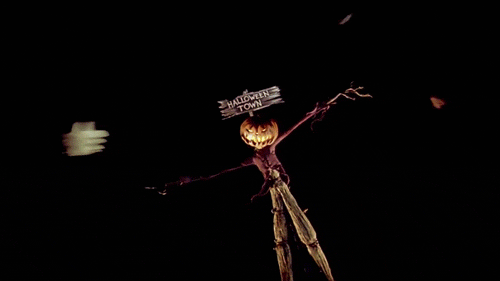
— Michael Roffman
07. Home Alone (1990)
Not Quite Timeless: 1 hr. 43 min.
Once Upon a Time: A precocious eight-year-old thinks he’d be better off sans parents and gets his wish when his family accidentally goes to Paris without him for the holidays. When he discovers that a pair of burglars are targeting his home, he turns pipsqueak Rambo and makes them wish they’d robbed that guy with the tommy gun instead. Poor filthy animals.
Head Count: Macaulay Culkin, Joe Pesci, Daniel Stern, John Heard, Catherine O’Hara, Roberts Blossom, John Candy, and Big Pete!
Moment of Pure Imagination: Okay, okay. I saw this film six times when it first came out because who doesn’t love seeing a little smart-ass light up baddies with paint cans and hearing Tommy Devito, I mean Harry Lime, eh, I really mean Joe Pesci, mumble “Ruffa-fedga-fudga” again and again. But most healthy, normal children don’t really fantasize about Joe Pesci or having to protect their house from burglars.
The real kid-tested, mother-abhorred appeal of Home Alone — and, yes, we learn it’s a fleeting fantasy with diminishing returns — comes when Kevin realizes he has the run of the house. That means jumping on beds, eating junk, watching trash, and, yes, tobogganing down the stairs and out the front door. My house was soooo set up to try that sledding stunt as well. Unfortunately, I had good parents.
Somewhere Over the Reading Rainbow: Sir John Hughes (yeah, I knighted him) wrote Home Alone as a movie script, but they novelized everything back then — episodes of Family Matters and Full House and, yes, popular kids movies like Home Alone. All I remember of Home Alone the novel was Buzz’s tarantula was named Axl. Hey, GNR were huge back then. No fat joke coming.
You’re Scaring Me, Smalls!: Old Man Marley is a bit creepy. Mac was the star, so you knew the Wet Bandits weren’t really going to get him. Could you imagine Pesci actually plugging him and then driving him out to a hole in the middle of the desert? But, damn, that kid-eating furnace in the basement. Now, that’s the fuel of childhood nightmares. That and Buzz’s girlfriend. Woof! Made me put off puberty for about a decade.
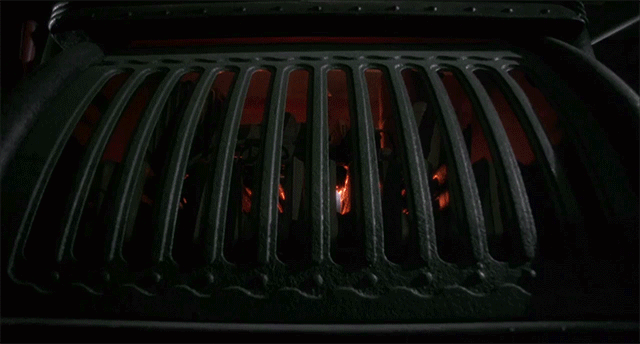
Give It to Me Now!: A bootleg copy of Angels with Filthy Souls would sit nicely under my Christmas tree this or any year. But, believe it or not, as a kid, I really envied Kevin’s “lovely cheese pizza just for [him].” As an adult, it’s usually depressing to hunker down alone with a pie. As a child with a sizable family, it’s so rare to have anything that you don’t have to share with several other people. Bon appetit, Kevin.
Why It’s Timeless: It’s an alternative Christmas movie in which an eight-year-old in a large family (basically, the lowest-ranking McCallister) finally gets the chance to run the show. That’s every kid’s dream, really — to act as the grown-up without having to act, well, grown up. But as young Kevin finds out, the world doesn’t work that way. Growing up means responsibilities more so than just getting your way, and being alone, Christmas or not, is no way to go through life. Just ask the guy with the shovel across the street.
By the time he makes his final stand to defend his castle, Kevin already realizes he’d much rather have his family at his side, even Buzz. The fact that he has to learn the exact same lessons in New York a year later hardly seems to matter. By the way, this last paragraph reads better if you make your internal voice sound like Daniel Stern narrating The Wonder Years. Try it.
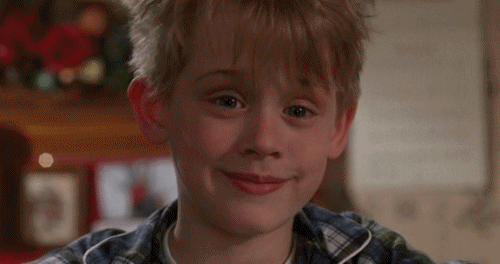
–M.M.
06. The Lion King (1994)
Not Quite Timeless: 1 hr. 28 min.
Once Upon a Time: Welcome to the sunny Pride Lands of Africa, where a young prince’s future is jeopardized after his scheming uncle slays his father. Of course, he doesn’t know that; in fact, he thinks it’s all his fault. As he flees the kingdom and into exile, evil prevails and eventually it’s all up to our aging prince to return and reclaim his furry domain. Okay, so it’s Hamlet with lions.
We Bought a Zoo! Matthew Broderick, James Earl Jones, Jeremy Irons, Jonathan Taylor Thomas, Moira Kelly, Nathan Lane, Ernie Sabella, Rowan Atkinson, Robert Guillaume, Madge Sinclair, Whoopi Goldberg, Cheech Marin, Jim Cummings
Moment of Pure Imagination: Disney went all out for The Lion King. One can imagine Jeffrey Katzenberg, who deftly managed the animation department at the time, walking straight into the offices with the determination of a State-bound Coach Taylor and writing “Epic” on the whiteboard. Needless to say, the team delivered, and the film became a box-office stud, conquering that year’s receipts and becoming the second-highest-grossing film of all time.
That prestige was already anointed, however, with the film’s glorious cold open, when King Mufasa and Queen Sarabi parade through the African terrain and up to the edge of Pride Rock. The way the title slams down after Elton John and Tim Rice’s “The Circle of Life” comes to a crashing end is the stuff of legend. It’s the Everest of the Disney Renaissance.
You’re Scaring Me, Smalls!: How about that Nazi imagery during “Be Prepared”? Jeremy Irons added a certain wit to his poisonous Scar, and his theme rules, but when those rabid doggies of his start marching together, it’s spooky stuff. It’s also a brazen move from Disney, considering they’ve long been accused of being anti-Semitic. H
ey, even Academy Award-winning juggernaut Meryl Streep argues as much: “Disney, who brought joy, arguably, to billions of people, was perhaps, or had some … racist proclivities. He formed and supported an anti-Semitic industry lobby. And he was certainly, on the evidence of his company’s policies, a gender bigot.” It’s cool, though, at least the Mickeyland helped our boys in blue with some propaganda. But, yeah, Scar’s troops … sheesh.
Sing It Again, Timon and Pumbaa: When a song turns into a phrase, a colloquialism, or a mantra, you know it’s gold, Jerry. That’s why, yes, over two decades later, we still have to sit through the insufferable musings of “Hakuna Matata”. It’s not the best song — once again, that honor goes to the sweeping majesty above — but it’s by far the one that’s resonated most over the years.
Blame it on all the soccer pops who tell their wimpy youths to chin up, stand tall, hakuna matata (read: Swahili for “no worries”). Still, there’s no denying the universal charm of Nathan Lane, and he adds a sense of levity to the track that goes above and beyond John’s maudlin overtones that flood the piss-poor-yet-Oscar-winning ballad, “Can You Feel the Love Tonight”.
Give It to Me Now!: Speaking of which, Lane’s stand-up meerkat, Timon, was cute, funny, and savvy enough to leave every child across the world wondering, Whoa, can I have a Timon? Fortunately for future youths, the little buggers have since become domesticated pets, but according to The Guardian, they’re “savage little home wreckers” and “not as cute as they look.” Whatever, dude, they’re still probably better than a talking hornbill. You suck, Zazu.
Why It’s Timeless: The Lion King was really the last animated film to resonate with a wide audience. A year later, Pixar would change the game with Toy Story, and, well, that was that. And while the Disney Renaissance would continue into 1999, coming to a proper close with the over-budgeted Tarzan, not one film could even sprint to keep up with Simba’s Hamlet. There are a lot of complicated reasons for this, but it all boils down to the simple fact that The Lion King was a worldwide cultural phenomenon — and it still is.
Thanks to Julie Taymor’s stage adaptation, which is currently the third longest-running show and highest-grossing Broadway production in history, the African epic’s themes of family, honor, and pride continue to influence the lives of millions of people, and it will always come back to this film. Just take comfort knowing someone somewhere will likely still be muttering “hakuna matata” long after you’ve left your death bed.
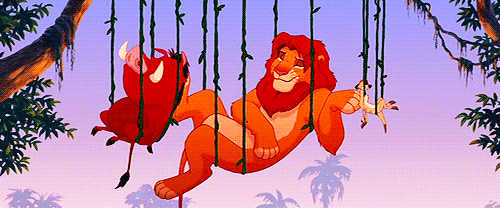
— M.R.
05. Mary Poppins (1964)
Not Quite Timeless: 2 hr. 19 min.
Once Upon a Time: A magical nanny with a set of four-octave soprano pipes floats into the dysfunctional home of London’s Banks family, turning the household upside down over the course of several fantastical adventures that mend both kites and familial bonds.
The Birds, The Stars, and the Chimney Sweeps: Julie Andrews, Dick Van Dyke, David Tomlinson, Glynis Johns, Karen Dotrice, and Matthew Garber
Moment of Pure Imagination: From the moment she floats across our screens and into the Banks’ lives, it’s clear that Mary Poppins is not a typical nanny. Under her supervision, the most humdrum outings turn into magical adventures (e.g. jumping into chalk drawings and taking tea on ceilings). And what better signal for audiences to expect the unexpected than seeing Mary Poppins slide up a banister? Nowadays, many of our grandparents have stair lifts, but as children, this stunt left our mouths agape like codfishes. It was also a great way for kids at home to crack their skulls wide open.
Somewhere Over the Reading Rainbow: Author P.L. Travers spent more than two decades declining overtures from Walt Disney to purchase the film rights to her beloved Mary Poppins series. Travers so disliked Disney’s final product that she reportedly wept and grew visibly upset during the film’s premiere. It comes as no surprise then that she denied Disney permission to create a sequel despite the film’s overwhelming critical and commercial success.
In fact, when she did grant permission for a Mary Poppins stage musical to be produced, she stipulated that only British writers could work on the project and absolutely nobody from the original Disney production could take part. She’s likely spinning in her grave over the upcoming Mary Poppins sequel while somewhere Walt Disney’s cryogenically frozen face is sporting a big smile.
Sing It Again, Julie: While longtime Disney collaborators Richard and Robert Sherman won an Oscar for “Chim Chim Cher-ee” (a cheerful ditty romanticizing the incredibly deadly chimney sweep occupation) and “Supercalifragilisticexpialodocious” has become part of our musical and linguistic lexicon, nothing quite tops the loveliness of Andrews singing “Feed the Birds (Tuppence a Bag)”. The song, one of Walt Disney’s personal favorites, speaks to the small kindnesses absent from the Banks home and so often neglected in our own frantic lives.
You’re Scaring Me, Smalls!: The chase scene through the back alleys of London following the run on the bank may be a tad bit creepy, but a million reruns of Diagnosis Murder have yet to silence the terrifying ringing in my ears of Dick Van Dyke’s not-of-this-or-any-London-ever cockney accent. Sorry, Bert.
Give It to Me Now!: Bert’s one-man band getup would play well on the Chicago subway circuit, and I’d make a jolly holiday of rush hour if I had one of those magical carousel horses, but I really wanted to live in Admiral Boom’s ship-shape(d) home as a kid. Nothing like firing off a cannon in a built-up metropolitan area every hour on the hour. Posts, everyone!
Why It’s Timeless: While it’s true that today’s latchkey generation know little about nannies and couldn’t be much further removed from iLess Edwardian culture, as long as imagination prevails, today’s children, like Jane and Michael, will also cherish those moments when the fantastical slips through the cracks of the mundane.
The dilemma facing the Banks household hasn’t grown any less relevant either. Even in the most loving families, what modern child doesn’t at times still feel neglected or wish he or she could spend more time with a seemingly always-busy parent? These concerns, of course, retain a lighthearted levity due to delightful casting, iconic melodies, and groundbreaking sequences that still hold their charm and magic half a century later. It all speaks to why Disney has chosen to do a sequel rather than a remake: Mary Poppins remains practically perfect in every way. Spit spot!
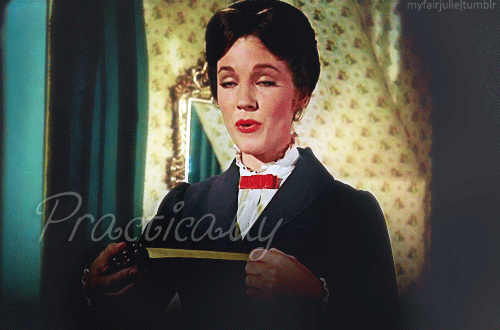
— M.M.
04. Toy Story (1995)
Not Quite Timeless: 1 hr. 21 min.
Once Upon a Time: There’s trouble in the bedroom when a young boy receives the hottest new action figure on the market for his birthday, tipping off a series of existential crises for two anthropomorphic toys. One’s a cowboy, the other’s a spaceman, or so they think.
Guys and Dolls: Tom Hanks, Tim Allen, Laurie Metcalf, Annie Potts, Don Rickles, Wallace Shawn, John Ratzenberger, Jim Varney
Moment of Pure Imagination: By now, we’re used to seeing Woody and the gang pull off all sorts of stunts, but when you’re first introduced to Andy’s toys, it’s a magical moment. They’re just like us, you realize instantaneously, and that palpable personification is more or less the conceit of every Pixar film and how the studio would go on to change the way we look at bugs, fish, and cars.
But really, that entire opening is a masterclass in writing and directing, an imaginative portrait that sweeps us into a world where toys can come to life and co-exist like they’re in a small Utopian town. How the film hops right into the action also speaks volumes about Pixar’s unrivaled ability to be so damn magnetic.
There’s Life in the Toy Chest: The roots of Toy Story begin all the way back in 1988, when director John Lasseter pitched the concept of a short film called Tin Toy to Pixar owner Steve Jobs. The story would follow a one-man-band toy named Tinny as it desperately tried to escape from a messy, nasty baby. It’s hard to believe now, but Pixar was also trying to escape — from debt. Regardless, the late Apple mastermind kept the film alive, and once again, his eternal wisdom paid off triumphantly. By 1989, turning heads over at Disney. The rest, as they say, is movie magic.
You’re Scaring Me, Smalls!: Sid’s a total asshole, but if you go back and watch the film with a pair of adult eyes, you’ll discover he actually has a pretty sad, pathetic, and lonely life. Screenwriters Joss Whedon, Andrew Stanton, Joel Cohen, and Alec Sokolow did a hell of a job piecing together a surprisingly nuanced bully, and you don’t really discover how tragic of a character he is until you visit his mess of a home.
Of course, there’s the twisted, gnarled toys that come out of the gloomy woodwork, but what really stings is when Woody wanders around the desolate hallways. The scene was already tense, but things turn downright eerie from a few understated visuals, such as a glowing television flickering in a dark room nearby or the realization that Sid’s sister is doomed to eventually follow her brother’s steps.
Sing It Again, Randy: Randy Newman really shot himself in the foot with “You’ve Got a Friend in Me”. The guy’s written dozens of bona fide hits, but everyone and their mother will always remember him for this saddle song. It’s a shame, too, because it’s not even the best song on the soundtrack. “Strange Things” is arguably the strongest of the bunch, and also the most poignant.
As Woody copes with his world changing all around him — Andy’s preference for space lasers over cowboy boots — Newman ably scores the mixed emotions of the scene. After all, Andy’s happy, but for the first time in his plastic life, Woody can’t share the joy. That sobering moment not only makes for great emotional storytelling, but also serves as a strong lesson for anyone watching: “Roll with the punches, kid.”
Give It to Me Now!: It’s a film about toys. Of course we wanted one of everything. That’s where Burger King came in. Look, I’m not one to endorse fast food, but this Milwaukee Chubs was all about $1.00 burgers and free swag as a kid. As such, I collected every one of these suckers, even convinced my little brother to join in so we could have extra army men. They were pretty, pretty … pretty impressive for fast-food fare, too. Woody was plush like a real doll, Buzz’s wings ejected, and R.C. even raced around the bedroom. Come Christmas time, we were sending the troops up the trees for recon. #nostalgia
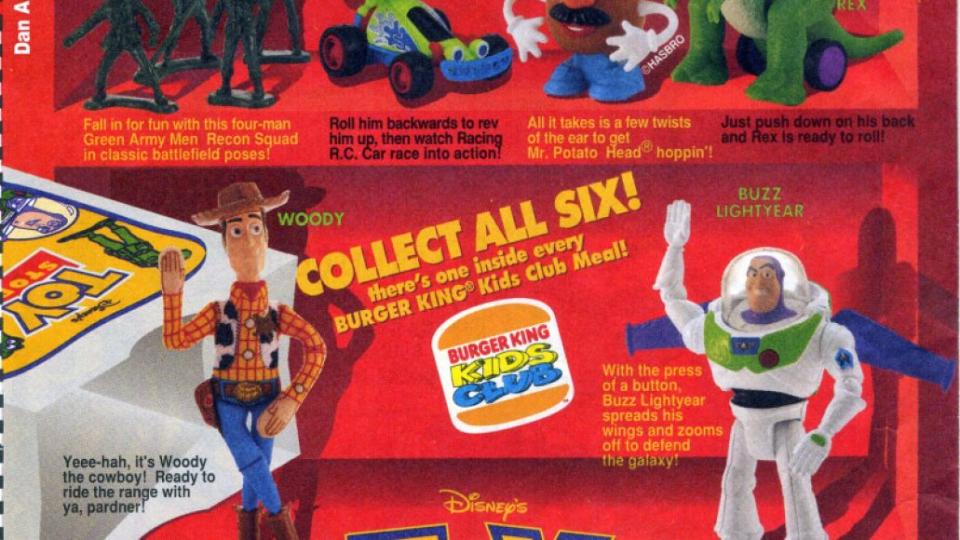
Why It’s Timeless: Toy Story has a lot of hallmarks working in its favor. There’s the whole charm about being the first feature-length computer-animated film, which means future film historians will always look back on it, especially given today’s era of filmmaking, where such films rule the roost. Then there’s the obvious notion that it’s one of the more lucrative franchises in Disney history, both commercially and critically, with a fourth installment coming down the pipeline. (Seriously, they’re like the Star Wars to Pixar’s Lucasfilm.)
But above all else, it’s a well-written, super-smart comedy that never resorts to dated references, opting instead for an enviable blend of situational humor, witty dialogue, and irresistible chemistry. Granted, toy stores are nonexistent these days, but the odds of these plastic pals popping up in the donate bin anytime soon are slim to none.
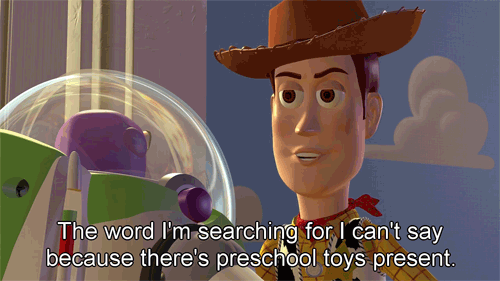
— M.R.
03. E.T. the Extra-Terrestrial (1982)
Not Quite Timeless: 1 hr. 55 min.
Once Upon a Time: An ugly-but-actually-kind-of-cute alien gets stranded in suburbia when his parents have to make a quick escape in their spaceship. The lovable extraterrestrial then meets and befriends a 10-year-old boy, who hides him from government agents and helps him return home.
Earthlings: Henry Thomas, Dee Wallace, Peter Coyote, Robert MacNaughton, and Drew Barrymore
Moment of Pure Imagination: The most Spielbergian moment from the film? How about the one that eventually became the freaking logo of Amblin Entertainment (it was also made into a ride at Universal Studios, RIP). Elliott’s bicycle ride into the sky is a Spielbergian dream come to life onscreen — the massive moonlit backdrop, the sweeping John Williams score, the metaphorical triumph of children over adults who just don’t understand. Movie magic doesn’t get more magical than this.
You’re Scaring Me, Smalls!: Here we have an alien movie where we never fear the alien; we only fear for him. From moment one, we know the ones to be scared of are homegrown, and Spielberg goes to great lengths to make this clear. Notice that until we finally see Keys’ face, no adults, other than Elliott’s mother, are framed normally.
They all appear obscured, in shadows, or shot from the waist down. Even when we discover that Keys isn’t a bad guy, it’s already been made clear that it’s going to take children, Elliott in particular, to get E.T. home. It’s fitting in a film largely about empathy that we don’t feel scared for ourselves (as is usually the case with movies) but for another, even one from a planet far, far away.
Give It to Me Now!: If there was an Academy Award for Best Product Placement, Reese’s Pieces would have shut it down with this knockout performance. As the popular legend goes, M&M’s were supposed to be E.T.’s favorite candy in the film, but Mars thought the little alien was so hideous that they pulled their product from consideration. And that’s not even the worst decision ever involving M&M’s: I just ate three bags in a row, and I think I’m going to be sick.
Why It’s Timeless: It takes a special kind of talent to humanize a dehydrated potato, but it takes something else entirely to craft a film that so deftly combines elements of sci-fi, comedy, adventure, and drama. More than three decades after its release, E.T. continues to stand as Spielberg’s greatest triumph, spawning not only an official fan club but an entire generation of filmmakers led by Spielberg protégé J.J. Abrams.
This seems fitting, because the story itself revolves around a child coming of age and learning that the world is much, much bigger than his own backyard. For filmmakers and fans alike, E.T. offers an invitation to a universe where imagination reigns and possibility knows no limits. In an era when Hollywood can’t seem to stop churning out sequels and reboots, that invitation seems more appealing — more pressing, really — than ever.
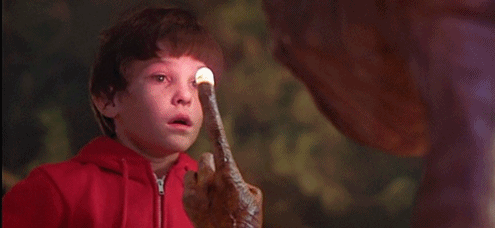
— Collin Brennan
02. Willy Wonka & the Chocolate Factory (1971)
Not Quite Timeless: 1 hr. 40 min.
Once Upon a Time: A poor, goodhearted, mop-topped boy who lives with his mother and four bedridden grandparents finds one of five golden tickets that lets him and four brats who need a good kick in the pants visit a wondrous chocolate factory owned by the world’s most famous and eccentric confectioner. Our diet starts tomorrow.
Chocolate Makers, Golden Ticket Holders, and Grandpas: Gene Wilder, Jack Albertson, Peter Ostrum, Julie Dawn Cole, Denise Nickerson, Paris Themmen, and Michael Bollner
Moment of Pure Imagination: If the opening candy store free-for-all (did any kid actually pay?) tickled your tummy’s imagination, then let’s cut out the middleman retailer and go straight to the sweet, sweet source. Willy Wonka’s chocolate room, “where everything is eatable, I mean edible,” represents the ultimate fantasy of every child who has ever lived or ever will live.
Even the parents are reduced to childlike wonder and sweet tooths when they gaze out at chocolate waterfalls, cream-filled mushrooms, and gummi bear trees. It’s so spectacular, so imaginative that I think someone should sing a song right about now… No, not you, Grandpa Joe. You had your big number already.
Sing It Again, Gene: Somehow, composers Leslie Bricusse and Anthony Newley stumbled upon a melody as delectable and awe-inspiring as the actual chocolate room Gene Wilder sings it in. The song and delicious landscape go together as perfectly as snozzberries and lickable wallpaper. It’s since been covered by everyone from Primus to Josh Groban and has become an anthem for thinking outside the boxes that life tries to keep us tucked neatly away in.
Somewhere Over the Reading Rainbow: Treasured children’s author Roald Dahl flat-out disowned the film. Dahl, who produced an early version of the script that was largely rewritten, resented certain casting choices, changes to the plot, and a shift in focus from Charlie to Willy Wonka. It’s safe to say that had Dahl found a golden ticket to visit this particular chocolate factory, he likely would’ve crumpled it up and fed it to a vermicious knid.
You’re Scaring Me, Smalls!: The omnipresent Slugworth was terrifying as a child. The voyage upon the Wonkatania through the psychedelic, gross-out tunnel from hell also scared me. As an adult, though, I’m far more troubled about the logistics and hygiene of four old people living in a bed together for several decades. Put me on that damn boat with a slew of Slugworths before you ask me to set foot near that diseased box spring.
Give It to Me Now!: Your inner Veruca can really creep up on you in a place like this. Geese that lay golden eggs, chocolate waterfalls, little orange men who deliver rhyming moral lessons. If I have to pick just one souvenir, I’d install the Wonkavator in my apartment building. My neighbors could ride, too, but only I’d get to push the buttons.
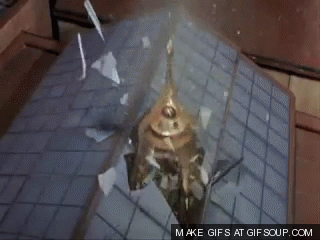
Why It’s Timeless: While the movie does sugarcoat Dahl’s story quite a bit, we still have a timeless cabbage soup-to-chocolate bars tale here. A goodhearted boy who has always gone without while less-deserving children (like that August kid) have gorged themselves on easy street their entire lives finally gets his golden ticket and a taste of the sweet life.
Also, children and grown-ups alike can appreciate — or at least take amusement in — the sweet, often dark justice doled out in Willy Wonka’s factory. Unlike the real world, here is a place where the good get punished and the rotten get rewarded … wait, strike that, reverse it. Chocolate-covered wonder, delectable songs, and a bit of sugarcoated justice make Willy Wonka & the Chocolate Factory as timeless as an everlasting gobstopper.
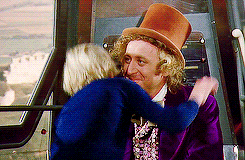
— M.M.
01. The Wizard of Oz (1939)
Not Quite Timeless: 1 hr. 42 min.
Once Upon a Time: A runaway Kansan girl and her pint-size pooch get swept away by a tornado and deposited in a strange, faraway land called Oz. With the help of a straw man, an ax-wielding tin can, a fraidy-cat, and some geezer behind a curtain, she sets out to best a vengeful witch and return home to her family. Relax, Oz is but a dream.
Lions and Tigers and Bears, Oh My!: Judy Garland, Frank Morgan, Ray Bolger, Bert Lahr, Jack Haley, Margaret Hamilton, and Terry as Toto.
Moment of Pure Imagination: For all the enchantment to be found through Dorothy’s journey, unforgettable friends, and the film’s iconic songs, MGM’s early use of the Technicolor three-strip process might be what made us most believe we had actually landed in Oz. Garland’s sepia-toned double, Bobbie Koshay, opens the farmhouse door, our portal, and out steps Dorothy in her famous blue-and-white gingham dress into a vibrant world of color that made it clear none of us were in Kansas anymore. We were down the rabbit hole, through the looking glass, and skipping along the Yellow Brick Road, and never has that bridge between real and fantasy worlds been more pronounced or magical onscreen.
Somewhere Over the Reading Rainbow: Author L. Frank Baum published his novel The Wonderful Wizard of Oz in 1900 and subsequently completed 13 sequels to Dorothy’s fantastical adventure. A successful stage musical came about in 1902, but it wasn’t until MGM’s 1939 adaptation that Baum’s work was done justice onscreen.
As is the case with many adaptations, significant differences exist between the novel and the film. Three of the most notable are that Baum’s Oz is a real place, not a dreamland; Baum never mentions that the Witch’s skin is green; and the magical footwear in the novel are a pair of charmed silver shoes, not ruby slippers. The last two discrepancies no doubt can be attributed to MGM shelling out major green for jaw-dropping Technicolor.
You’re Scaring Me, Smalls!: Has any movie character induced more nightmares or caused more children to pull the blankets over their eyes than the Wicked Witch of the West? (All achieved, by the way, in a paltry 12 minutes of total screen time.) Even when actress Margaret Hamilton appeared as a sweet, old lady on Mr. Rogers’ Neighborhood years later, I remember thinking, “Don’t truss it, Mr. Rogers!”
Of course, I grew up to learn that Hamilton was actually a very kind person, had been a kindergarten teacher, and had endured far more pain during filming than her character ever inflicted on Dorothy — suffering severe burns from a botched fiery exit while wearing potentially toxic green makeup. Still, whenever I hear her infamous threat, “I’ll get you, my pretty, and your little dog, too,” I’m instantly transformed back into that cowardly, little boy turning to his old English sheepdog as if to say, “You’re on your own, Toto.”
Sing It Again, Judy: Dorothy’s serenade to Toto about finding a land where “troubles melt like lemon drops” will likely never be topped by another movie song. A young farm girl magically summons a deep contralto voice as she yearns for a place where she can forget all her cares. It’s a simple idea, but one that’s absolutely timeless.
Anyone who has ever longed for a happier, kinder, more understanding place can relate to Dorothy’s desire to travel beyond the rainbow. It makes it all the more remarkable then that the song was originally cut from the film because studio executives thought it slowed the story down too much and felt that a young starlet shouldn’t be singing in a locale as unseemly as a barnyard. Luckily, the Wizard allocated some extra brains for those suits just in time to make movie history.
Give It to Me Now!: I already have a brain, heart, and a wee bit o’ courage (and plenty of nerve). Lots of fellas actually have ruby slippers and gingham Dorothy dresses, but they pull that look off far better than I could. My studio apartment doesn’t really allow me to stable the Horse of a Different Color, but I was always intrigued by Glinda’s bubble. Yeah, I think I’m confident enough in my masculinity to travel around Chicago by pink bubble. Stop giggling, Munchkins and Cubs fans!
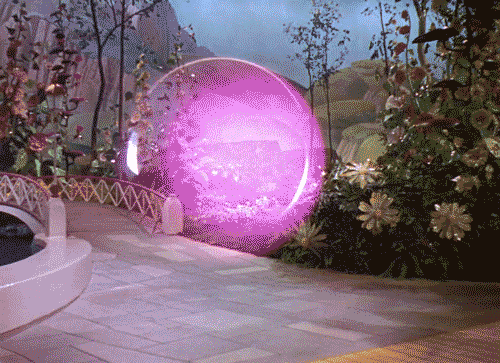
Why It’s Timeless: Part of why we have never forgotten about Oz is that the Yellow Brick Road has led right into our homes for so many years. From the late ’50s until the early ’90s, annual television screenings of the film became family traditions, and when VCRs hit the home market, The Wizard of Oz was one of the earliest movies made available on videocassette. But the film’s power runs much deeper than tradition and, though dated and hammy, taps into something as relevant to today’s children as the Depression-era audiences who first saw it in theaters.
Like Dorothy, we go into Oz yearning for something better, and most of us return understanding that we already had what we really needed all along, whether it be brains, a heart, courage, or a loving home. Nearly 80 years after that twister first scooped Dorothy and Toto up and dropped them into a magical land, there’s still no place quite like Oz. Oh, what a world, what a world.
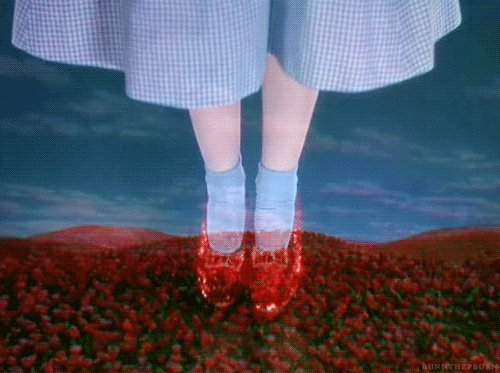
— M.M.
The 10 Most Timeless Children’s Films
Consequence Staff
Popular Posts
